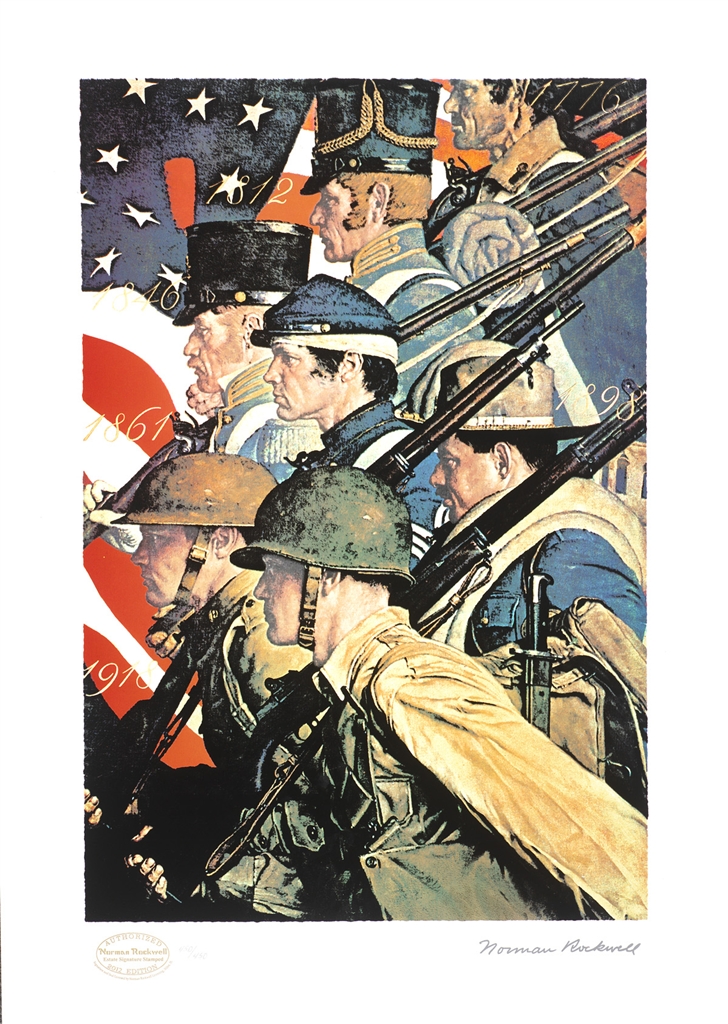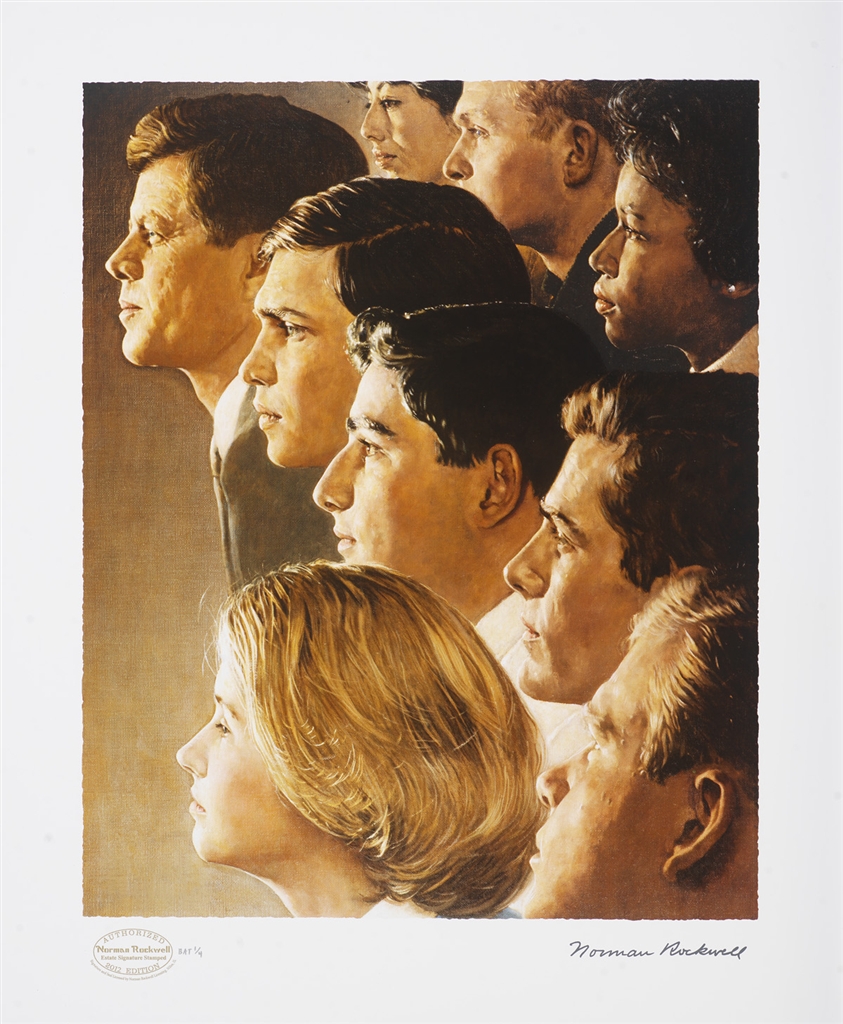75 Years Ago, Norman Rockwell’s ‘Four Freedoms’ Inspired a Generation

Norman Rockwell’s “Four Freedoms” (1943)
In February 1943, artist Norman Rockwell completed one of the most complex projects of his entire career. In his desire to help America’s war effort during World War II, Rockwell decided to illustrate four “Freedoms” outlined by U.S. President Franklin Delano Roosevelt in his January 1941 address to the nation.
President Roosevelt hoped that any postwar world would be based on those “essential” freedoms. Rockwell hoped that his paintings of the “Four Freedoms” might help raise some money for the war effort.
Little did Rockwell know that, before the end of World War II, the U.S. Government would print millions of copies of his paintings and his “Four Freedoms” would help sell $132,999,537 worth of war bonds.
But the project almost never happened.
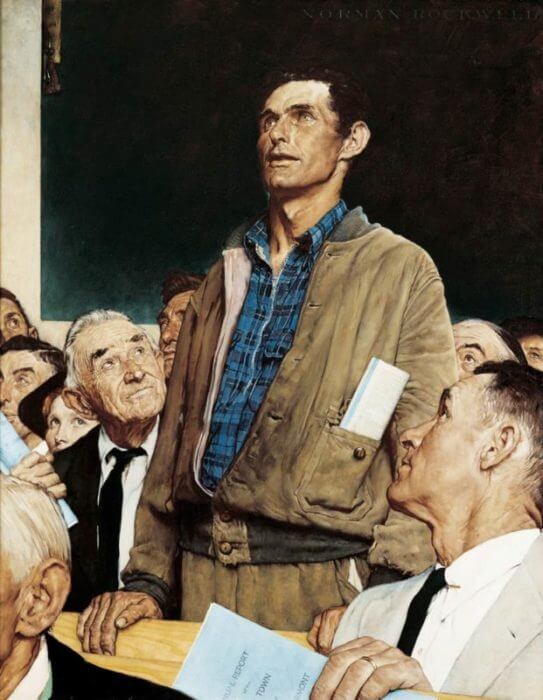
“Freedom Of Speech”
(1943), Norman Rockwell. From “The Four Freedoms”
THE ORIGINS OF THE FOUR FREEDOMS
President Roosevelt first mentioned his “four freedoms” during his State of the Union speech on January 6, 1941—11 months before the U.S. was attacked at Pearl Harbor.
Here’s how he described them:
In the future days, which we seek to make secure, we look forward to a world founded upon four essential human freedoms.
The first is freedom of speech and expression… The second is freedom of every person to worship God in his own way… The third is freedom from want… The fourth is freedom from fear…
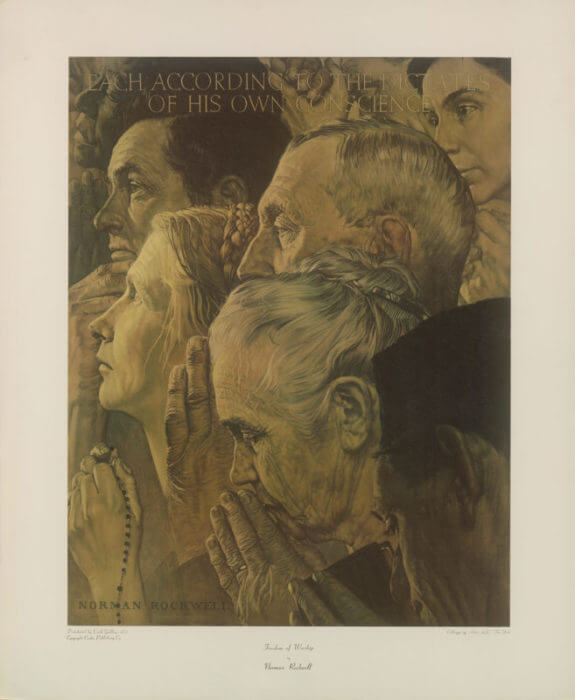
“Freedom of Worship” (1943), Norman Rockwell. From “The Four Freedoms.”
NORMAN ROCKWELL JOINS THE WAR EFFORT
One year later, the U.S. was deeply involved in the war and Norman Rockwell—already well-known for his iconic covers for The Saturday Evening Post—was trying to support the war effort however he could. In the spring of 1942, while he was creating promotional posters for the U.S. Army, Rockwell came up with the idea of illustrating Roosevelt’s “Four Freedoms.”
There were just two big problems.
First, it was an impossibly ambitious project. How do you illustrate abstract concepts like The Freedom of Speech or Want? The scope wasn’t lost on Rockwell.
“It was so darned high-blown,” he said. “Somehow I just couldn’t get my mind around it.”
The second problem was that no one would pay him to do it.
Rockwell first pitched his idea of painting the “Four Freedoms” to the Graphic Division of the War Department’s Office of Facts and Figures in May 1942. They were interested, but wouldn’t commit to the idea. So Rockwell created elaborate charcoal sketches of his concepts and traveled to Washington D.C. to propose the series to the Office of War Information. They too turned him down.
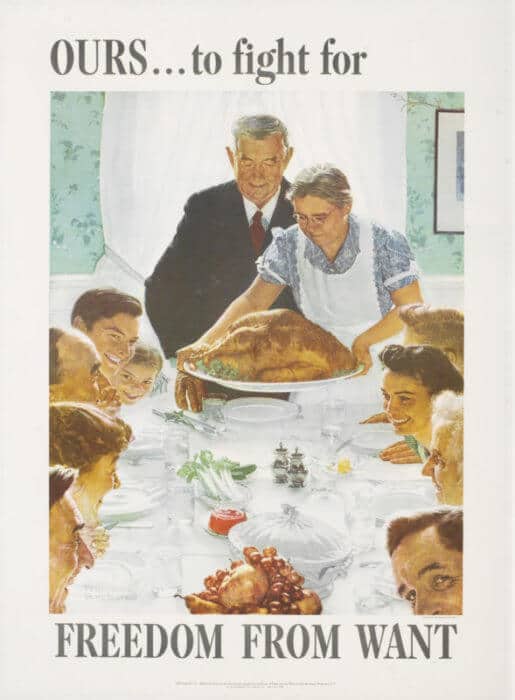
“Freedom From Want” (1943), Norman Rockwell.
From “The Four Freedoms.”
On his way back home, Rockwell met with Ben Hibbs, his new editor at the Saturday Evening Post. Hibbs embraced the concept of the Four Freedoms and committed to running them in the magazine. He gave Rockwell two months to complete them.
It took Rockwell seven months.
The tenacious project took its toll on the artist, who lost 10 pounds over the course of those seven months.
Afterward, he famously said, “The job was too big for me … It should have been tackled by Michelangelo.”
The Saturday Evening Post began publishing Rockwell’s “Four Freedoms” in February 1943. They ran one painting a week, starting with “Freedom of Speech” on February 20. Each painting was accompanied by an essay extolling the virtues of that particular freedom.
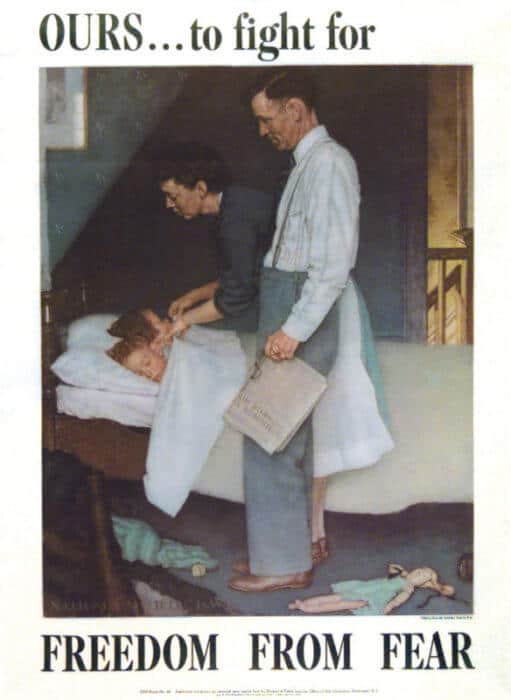
“Freedom from Fear” (1943), Norman Rockwell. From “The Four Freedoms.”
THE RECEPTION OF THE FOUR FREEDOMS
The Saturday Evening Post was not prepared for the reaction to Rockwell’s paintings. They immediately received over 25,000 requests for reprints of the art.
Two months later, U.S. Department of the Treasury partnered with the Post to use the “Four Freedoms” to sell war bonds and stamps. They printed over 4 million posters of the “Four Freedoms” and sponsored a national tour where over 1 million people came to see Rockwell’s original paintings in person.
In the end, Rockwell’s ambitious project raised more than $130 million to support the Allied troops and resulted in some of the most iconic images of his long and storied career.
Their impact is still being felt today. In 2018, 75 years later, Rockwell’s adopted hometown of Arlington, Vermont announced that they’re holding their first-ever “Four Freedoms Festival,” a celebration of Rockwell’s famous series, “their connection to the area, and the ideas and philosophies behind them.”
For collectors interested in the art of Norman Rockwell, view our online collection or speak to our gallery consultants.
RELATED LINKS:

